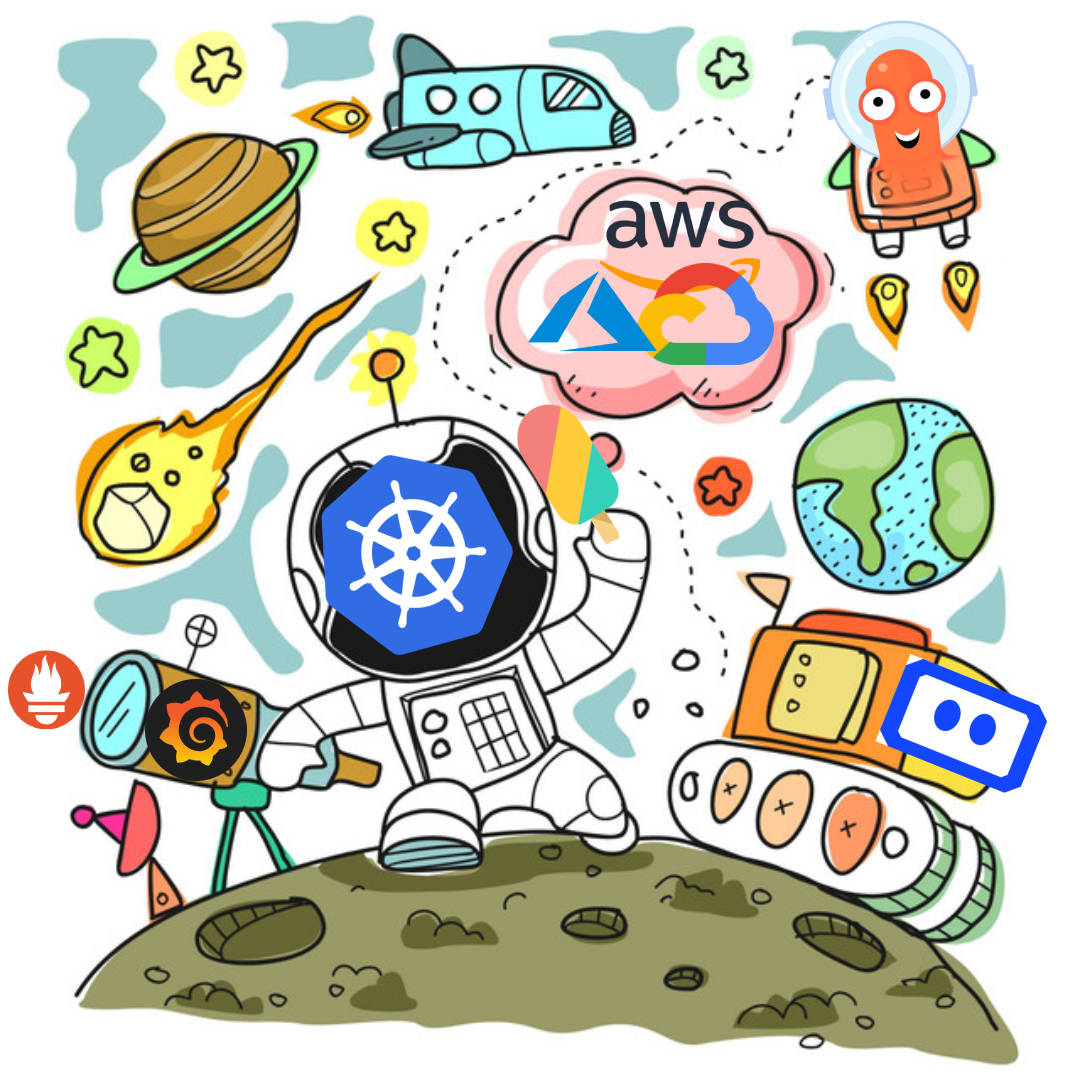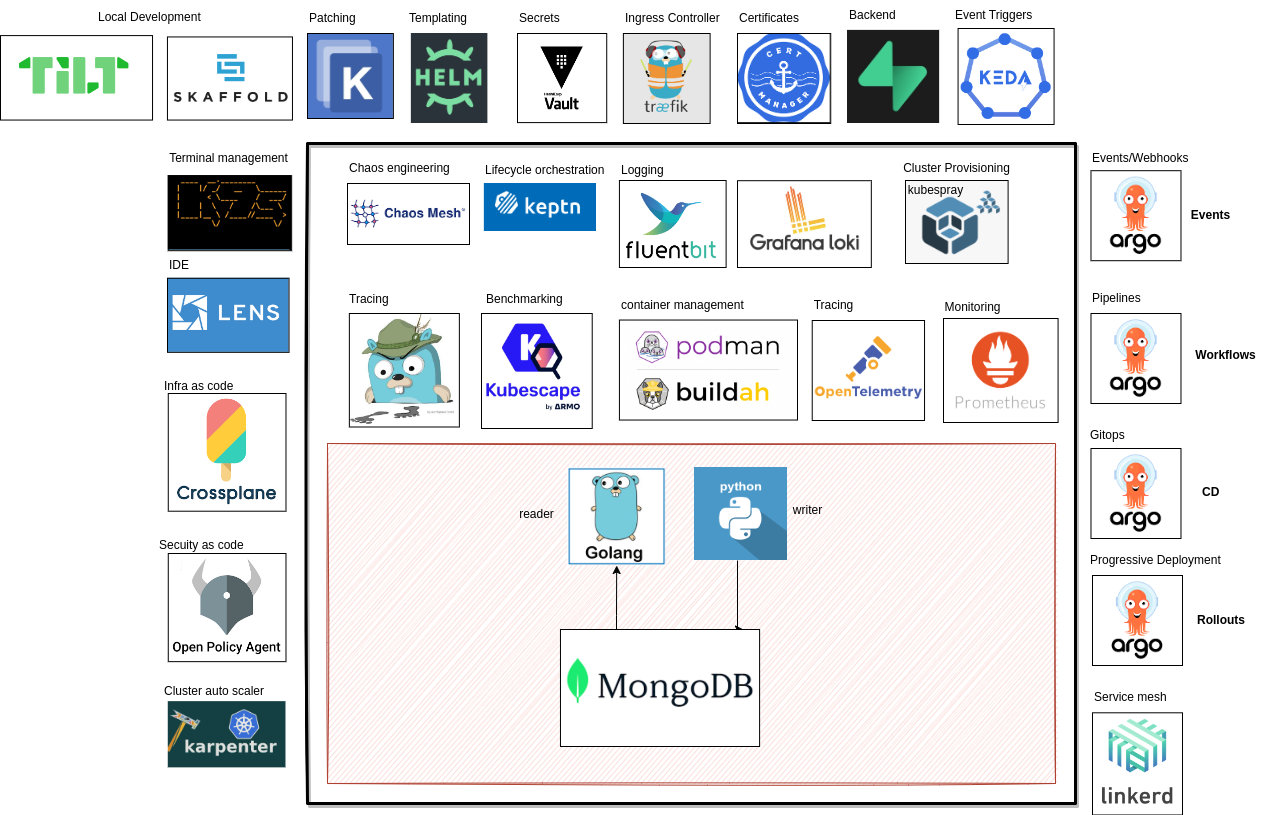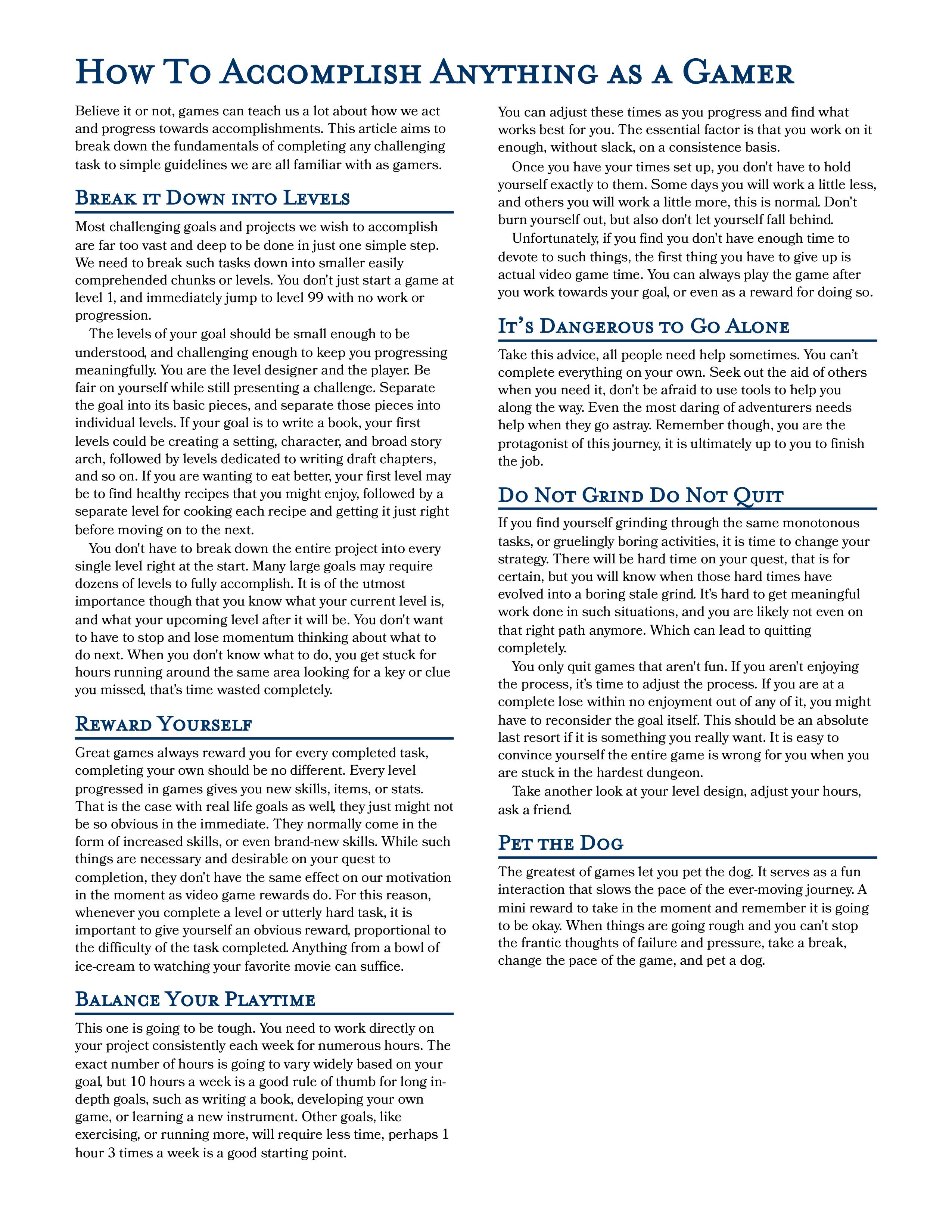Apollo 11
11 stage plan to know end-to-end of a k8s/cloudnative ecosystem
Theres a lot to explore, this journey may take a weeks to achieve.
Just remember this principle before you begin:
First do it -> Then do it right -> Then do it better
Final project
Heres how our final project will look like:
A full fledged Baking store app
- This will include 3-4 microservices and will include:
- multiple communication mechanisms : REST, graphql, gRPC
- Databases - both sql and no-sql
- authentication/authorization of users
- storage orchestration
- secret management
- chaos engineering
- data analytics
- cluster autoscaling
Here's the architecture for both the architecture flavors
- backend api: goLang
- Database:
- Postgres [for sql operations ]
- Mongodb [ for nosql operations ]
Tools:
- Local development: skaffold + telepresence/Tilt
- Cluster provisioning: Kubespray [optional, can use any tool but kubespray is the best for learning]
- CI: Argo Workflows
- Gitops: ArgoCD
- Progressive Deployment: Argo Events & Argo Rollouts
- Secret Store: Vault
- Ingress Controller: Apisix
- Packaging: Helm
- Patching: Kustomize
- Logging:
- Agent: Fluentd
- Backend: Loki
- Service Mesh: Istio
- Monitoring: Prometheus+Grafana
- Compliance monitoring: kubebench
- Policy enginer: OPA/ Kyverno
- Policy Checker: Kubescape
- Backup and restore: Velero
- Load Testing: Kube-monkey
- data analytics: python
- Serverless : OpenFaas
Extra:
- Dapr
- Dagger
Stages:
-
Stage 0: Pre-requisites
-
Stage 1: Basics + Local setup
-
Stage 2: Rest api + backend in local k8s cluster
-
Stage 3: Routing using ingress controller
-
Stage 4: Move on from Minikube/Docker
-
Stage 5: Helm packaging and Kustomize Patching
-
Stage 6: Deployment/Gitops
-
Stage 7: Monitoring + Observability + Tracing
-
Stage 8: Service Mesh
-
Stage 9: AutoScaling and Load testing
-
Stage 10: Chaos Engineering + Backup and Restore
-
Stage 11: Security and Compliance
Along the way we will explore all the services and features in the k8s ecosystem to get a handson on how to create a Complete app architecture
follow the principles in this image when you are embarking on this journey :
Pre-requisites
You need to be NASA before you can be in the apollo program ;)
Note: If you are not a beginner, feel free to move to stage 1 else you can treat this as a refresher and do it anyways :D
I recommend that you spend a good 2-3 weeks in these before even starting the journey. Will make the journey a breeze:
-
Linux :
-
Vim: (Coz there will not always be ide)
-
Yaml: ( k8s is all yaml)
https://github.com/arialdomartini/Back-End-Developer-Interview-Questions
- Ansible: (Iam using it and also its the best tool for automation)
Whats Cloud Native:
Also before we start, have a brief idea about what cloudnative is
These are some good references if you need to dive deeper:
-
https://iximiuz.com/en/posts/making-sense-out-of-cloud-native-buzz/
-
cloudnative basics:
Stage 1: Basics + Local setup [ 2 weeks ]
Goal: Good enough knowledge of k8s and golang to get started
1. Go Lang basics
Note: Go lang is optional. You can create the rest api's in Python or any other language as well.
Recommended videos to watch and follow along:
Once you have a fair amount of handson following the above two tutorials, follow this tour from go and then the cheatsheet to get an general overview:
You will also find my go learning scripts in stage-1/go-learning
Bro Tip: You commits pushed from laptop wont be visible in the github contributions. Yes we love green dots :D Follow this to setup GPG verified commits https://www.youtube.com/watch?v=4166ExAnxmo
Other Sources:
- Why Golang is DevOps' Top Programming Language in 2021
- https://www.youtube.com/watch?v=N0fIANJkwic&t=425s
- https://www.youtube.com/watch?v=79NeEFURq_U
- Learn Go Programming - Golang Tutorial for Beginners
- Golang Tutorials - Tech by Tim
- Go lang top usecases
2. Docker/Container Basics:
Because even though docker is no more the only container runtime in town. Its still the best place to get to know about containers and explore them
- Learn Docker in 7 Easy Steps - Full Beginner's Tutorial
- you need to learn Docker RIGHT NOW!! // Docker Containers 101
- Do one of these full courses:
- Cover remaining gaps with these cheatsheets and articles:
- https://github.com/wsargent/docker-cheat-sheet
- https://developer.ibm.com/blogs/what-are-containers-and-why-do-you-need-them/
- https://developer.ibm.com/tutorials/building-docker-images-locally-and-in-cloud/
Run your app in productionsection from https://docs.docker.com/get-started/overview/- Docker explained in Sketches
Deep-dive:
-
https://developer.ibm.com/articles/true-benefits-of-moving-to-containers-1/
-
https://developer.ibm.com/articles/true-benefits-of-moving-to-containers-2/
-
https://developer.ibm.com/videos/dev-diaries-app-modernization-containers/
-
https://gist.github.com/StevenACoffman/41fee08e8782b411a4a26b9700ad7af5 [best practices]
-
https://www.youtube.com/watch?v=RfL_CjXfQds [Dockerless: Build and Run Containers with Podman and Systemd]
3.Kubernetes basics
-
Take an overview of K8s:
-
Watch this video completely. Take notes:
-
Get your hands dirty. This tutorial will give a good bootstrap on k8s operations
-
Brisk through https://kubernetes.io/docs/concepts. (Coz reading the documentation for 15 mins is better than spending 2 hours on stackoverflow) :D
The two tasks will make it pretty easy for you to understand the core concepts from the documentation. This will be just to consolidate those core concepts and collect more dots of k8s knowledge. In the later stages you will be able to connect those extra dots as well.
Networking
Kubernetes Essential Tools: 2021 https://itnext.io/kubernetes-essential-tools-2021-def12e84c572 https://itnext.io/kubernetes-explained-deep-enough-1ea2c6821501
https://dustinspecker.com/posts/how-do-kubernetes-and-docker-create-ip-addresses/ https://dustinspecker.com/posts/iptables-how-docker-publishes-ports/ https://dustinspecker.com/posts/iptables-how-kubernetes-services-direct-traffic-to-pods/
Optional:
- https://betterprogramming.pub/k8s-a-closer-look-at-kube-proxy-372c4e8b090
- https://developer.ibm.com/videos/learn-the-history-and-fundamentals-of-kubernetes/
- https://medium.com/containermind/a-beginners-guide-to-kubernetes-7e8ca56420b6 [2018 article but covers lot of topics]
- https://developer.ibm.com/articles/kubernetes-networking-what-you-need-to-know/
- Complete all scenarios here: https://www.katacoda.com/loodse/courses/kubernetes
- https://www.youtube.com/watch?v=XJufs3ZZBVY [How to Setup a 3 Node Kubernetes Cluster for CKA Step by Step]
Install minikube & understand the basics:
https://kubernetes.io/docs/tutorials/hello-minikube/
Note: Minikube is the simplest way to start a local k8s cluster. There are many other ways like kind(Kubernetes in Docker) ,k3s,microk8s amongst others.https://developer.ibm.com/blogs/options-to-run-kubernetes-locally/
https://kubernetes.io/docs/reference/kubectl/overview/
K8s yaml syntax:
Its all yaml!!
-
https://www.mirantis.com/blog/introduction-to-yaml-creating-a-kubernetes-deployment/>
-
https://www.youtube.com/watch?v=1rwCkFTjikw> [YAML Tips for Kubernetes]
-
https://www.youtube.com/watch?v=5gsHYdiD6v8> [Simplify Kubernetes YAML with Kustomize]
-
https://boxunix.com/2020/05/15/a-better-way-of-organizing-your-kubernetes-manifest-files/
Optional
- Check all the terms and glossary https://kubernetes.io/docs/reference/glossary/?all=true
Stage 2: Rest api + backend in local k8s cluster [ 2 weeks ]
https://www.kdnuggets.com/2021/02/deploy-flask-api-kubernetes-connect-micro-services.html
Goal: Rest api to interact with mongodb. mongoexpress to interact with mongodb. Frontend to interact with API
- Create namespace "application"
kubectl create namespace mynamespace
- Create a simple go rest API [or in python]
https://www.youtube.com/watch?v=MKkokYpGyTU [ Introduction to HTTP with Go : Our first microservice]
https://tutorialedge.net/golang/basic-rest-api-go-fiber/
https://www.youtube.com/playlist?list=PLmD8u-IFdreyh6EUfevBcbiuCKzFk0EW_
For python there is: https://fastapi.tiangolo.com/tutorial/
- Build docker image with it
Create everything below using configuration yaml
Complete these two tutorials: https://github.com/knrt10/kubernetes-basicLearning https://redhat-scholars.github.io/kubernetes-tutorial/kubernetes-tutorial/index.html
Create a deployment and expose as external service
Should be able to access it from browser as .port
Create namespace "nosql" mongodb deployment Expose mongodb as internal service Mongodb credentials stored in secrets. Then referenced from mongoexpress deployment (Need to create secrets before you can use them)
Learn peristent volumes and stateful sets and change mongodb to that instead of deployment
Create a config map of non sensitive values if needed https://www.youtube.com/watch?v=o-gXx7r7Rz4 [Configuration management in Kubernetes for beginners] Mongo express deployment Expose mongodbexpress as external service
Change go code to interact with mongodb Make the go service interact with mongodb service Crud operation should work
Create namespace front end Add a small front end app to the make calls to go api
Create local image
Create it as deployment and load env variables from a config map Expose it as external service
Stage 3: Routing using ingress controller [ 1 week ]
Goal: Rest api to interact with mongodb. mongoexpress to interact with mongodb. Frontend to interact with API
https://kubernetes.io/docs/tasks/access-application-cluster/ingress-minikube/ https://betterprogramming.pub/do-faster-development-and-testing-on-kubernetes-apps-with-telepresence-b7eac604dca4
https://github.com/cdk8s-team/cdk8s
Create ingress rules for sample url ---> gobuydoge.com /Frontend will take to frontend external service /Backend will take to backeelnd external service
Create ingress controller to control all the routes On local machine add entry for gobuydoge.com to the ingress controller ip
Gobuydoge.com/frontend should show frontend Gobuydoge.com/backend should show backend
Extra:
- Have a look at various other ingress controllers: https://docs.google.com/spreadsheets/d/191WWNpjJ2za6-nbG4ZoUMXMpUK8KlCIosvQB0f-oq3k/htmlview?pru=AAABdXUHlbs*g6XkyoZXhanlhRazst77Xw
- Try Traefik v2 ingress controller
Stage 4: Move on from Minikube/Docker
Goal: Now that we have a good handson, lets move to building a prod grade cluster the hard way
- This is ofcourse an inspriration from the legendary Kelsey Hightowers: https://github.com/kelseyhightower/kubernetes-the-hard-way
We will be building a end to end cluster in gcp using kubespray.
Follow this guide for detailed steps: stage 4 notes
Install any other container runtime other than docker
-
https://www.youtube.com/watch?v=bV5RcNiHlfw [Kubernetes cluster with CRI-O container runtime | Step by step tutorial]
-
Run the same workload that was run on minikube
-
Run the above setup in either of a cloud k8s platform (manually for now):
- EKS
- AKS
- GKE
- Linode https://snyk.io/blog/hardening-amazon-eks-security/
Extra:
- Use buildah to build container images instead of
- Try different local k8s platforms: k3s,kind,microk8s.
- Aws eks infra building with CDK
https://blog.3sky.dev/article/eks-with-speed/
Stage 5: Helm packaging
https://www.youtube.com/watch?v=ZMFYSm0ldQ0 https://www.youtube.com/playlist?list=PLTCrU9sGyburBw9wNOHebv9SjlE4Elv5a
Goal: Rest api to interact with mongodb. mongoexpress to interact with mongodb. Frontend to interact with API
https://developer.ibm.com/tutorials/helm-101-labs/
-
helm packages building
-
Helmfile
-
Optional:
- Complete scenarios here: https://www.katacoda.com/javajon/courses/kubernetes-tools
Stage 6: Service Mesh
Goal: Rest api to interact with mongodb. mongoexpress to interact with mongodb. Frontend to interact with API
- Service mesh ISTIO
A service mesh, like the open source project Istio, is a way to control how different parts of an application share data with one another. Unlike other systems for managing this communication, a service mesh is a dedicated infrastructure layer built right into an app. This visible infrastructure layer can document how well (or not) different parts of an app interact, so it becomes easier to optimize communication and avoid downtime as an app grows.
https://www.youtube.com/watch?v=hkR1M6qwpnw [Istio in 5 minutes] Istio Service Mesh Explained https://www.youtube.com/watch?v=6zDrLvpfCK4
https://piotrminkowski.com/2021/07/12/multicluster-traffic-mirroring-with-istio-and-kind/
Stage 7: Monitoring + Observability + Tracing
Goal: Rest api to interact with mongodb. mongoexpress to interact with mongodb. Frontend to interact with API https://12factor.net/ -- 12 factor app
-
https://developer.ibm.com/tutorials/debug-and-log-your-kubernetes-app/
-
EFK Logging
-
K8s monitoring
- lens
- prometheus
- Tracing using opentelementry
Stage 8: App Testing + Deployment/Gitops + Autoscaling
https://training.linuxfoundation.org/training/introduction-to-gitops-lfs169/
https://github.com/devtron-labs/devtron https://tutorialedge.net/golang/intro-testing-in-go/
https://itnext.io/kubernetes-deployment-strategies-types-and-argo-rollouts-9d5f98e8b24e https://blog.container-solutions.com/kubernetes-deployment-strategies
Goal: Rest api to interact with mongodb. mongoexpress to interact with mongodb. Frontend to interact with API
-
K8s Deployment strategy
- CICD using github actions
- DevSecops
- TestOps
- k8s misconfiguration from reaching production- datree
-
Various deployment patterns in K8s
-
gitops with flux v2
Tekton: https://www.youtube.com/playlist?list=PLzpeuWUENMK3ITxCCJRtGGSb3Pf58W80r
https://www.youtube.com/watch?v=qJZQwd34yMI https://www.youtube.com/watch?v=rGHeAez-k5I&list=PLEV9ul4qfGOYLooAW9hnekIOyCMtI7zaZ&index=2
ArgoCd:
https://www.youtube.com/watch?v=c4v7wGqKcEY https://www.youtube.com/watch?v=QrLwFEXvxbo https://www.youtube.com/watch?v=cCYnIQZnlRg
https://rtfm.co.ua/en/github-github-actions-overview-and-argocd-deployment-example/
Stage 9: Event driven architecture
https://www.stackrox.com/post/2020/01/kubernetes-networking-demystified/
Goal: Rest api to interact with mongodb. mongoexpress to interact with mongodb. Frontend to interact with API
- Introduce a event bus or stream eg. Apache FLink and operate using same
Asynchronous Event Handling Using Microservices and Kafka https://www.youtube.com/watch?v=AwJItZbCAv4
Stage 10: Load Testing + Chaos Engineering + Backup and Restore
Goal: Rest api to interact with mongodb. mongoexpress to interact with mongodb. Frontend to interact with API
- DevSecOps
- inject failure into your Kubernetes clusters
For load testing: https://www.containiq.com/post/kubernetes-load-testing
Stage 11: Security and Compliance + threat detection
Certmanager:
https://www.youtube.com/watch?v=deLW2h1RGz0
https://www.youtube.com/watch?v=7m4_kZOObzw
https://www.youtube.com/watch?v=juVPuWBi29s https://getbetterdevops.io/k8s-ingress-with-letsencrypt/
Goal: Rest api to interact with mongodb. mongoexpress to interact with mongodb. Frontend to interact with API
https://kubernetes.io/docs/concepts/security/
https://twitter.com/kubesploit
- Secure the cluster based on the 4C’s of cloud native security https://developer.ibm.com/articles/journey-to-kubernetes-security/ https://developer.ibm.com/blogs/basics-of-kubernetes-security/
https://developer.ibm.com/tutorials/installing-and-using-sysdig-falco/
-
Falco
-
kubehunter
-
Gatekeeper
-
Enforce good practices using datree
https://www.stackrox.com/post/2020/05/kubernetes-security-101/
Apollo program continues: Go deeper in this space
Write your own Kubernetes controller in Rust from scratch https://blog.frankel.ch/start-rust/6/
Goal: Rest api to interact with mongodb. mongoexpress to interact with mongodb. Frontend to interact with API
Explore Kubernetes Serverless:
-
K-native https://cloud.google.com/knative/
-
OpenFaas https://www.openfaas.com/
-
Kubeless
Optional: https://www.katacoda.com/javajon/courses/kubernetes-serverless
Openshift:
-
https://developer.ibm.com/videos/openshift-vs-kubernetes-for-developers/
-
Admission controllers/webhooks https://www.youtube.com/watch?v=1mNYSn2KMZk
-
Kubernetes Operator
-- Try new tools and features: https://github.com/grafana/tanka
- https://ymmt2005.hatenablog.com/entry/k8s-things [47 Things To Become a Kubernetes Expert]
- https://github.com/dgkanatsios/CKAD-exercises
- https://github.com/walidshaari/Kubernetes-Certified-Administrator
- https://github.com/walidshaari/Certified-Kubernetes-Security-Specialist
- https://github.com/ibrahimjelliti/CKSS-Certified-Kubernetes-Security-Specialist
Cheatsheets
Labs
- https://developer.ibm.com/tutorials/kubernetes-101-labs/
- https://labs.play-with-k8s.com/#
- Complete all k8s scenarios in https://www.katacoda.com/
References
- https://github.com/tomhuang12/awesome-k8s-resources https://labs.play-with-k8s.com/# https://developer.ibm.com/components/kubernetes/series/kubernetes-learning-path/
Top Kubernetes Interview Questions Answers (From Container Specialist)
Reading lists
-
Kubernetes
-
Docker:
Youtube Channels
-
[ That DevOps Guy] https://www.youtube.com/channel/UCFe9-V_rN9nLqVNiI8Yof3w
Blogs
Inspiring Articles for long term learning
https://typesense.org/blog/the-unreasonable-effectiveness-of-just-showing-up-everyday/
-- Reading list:
- https://codefresh.io/about-gitops/gitops-for-infrastructure-and-applications/
- https://medium.com/paypal-tech/scaling-kubernetes-to-over-4k-nodes-and-200k-pods-29988fad6ed
- https://learnk8s.io/troubleshooting-deployments?utm_content=buffer20927&utm_medium=organic-twitter&utm_source=twitter&utm_campaign=civo-buffer
- https://www.cncf.io/wp-content/uploads/2022/02/CNCF-Annual-Survey-2021.pdf
- https://cloudnative101.dev/concepts/cloud-native/
- https://blog.kubecost.com/blog/kubernetes-kops/


